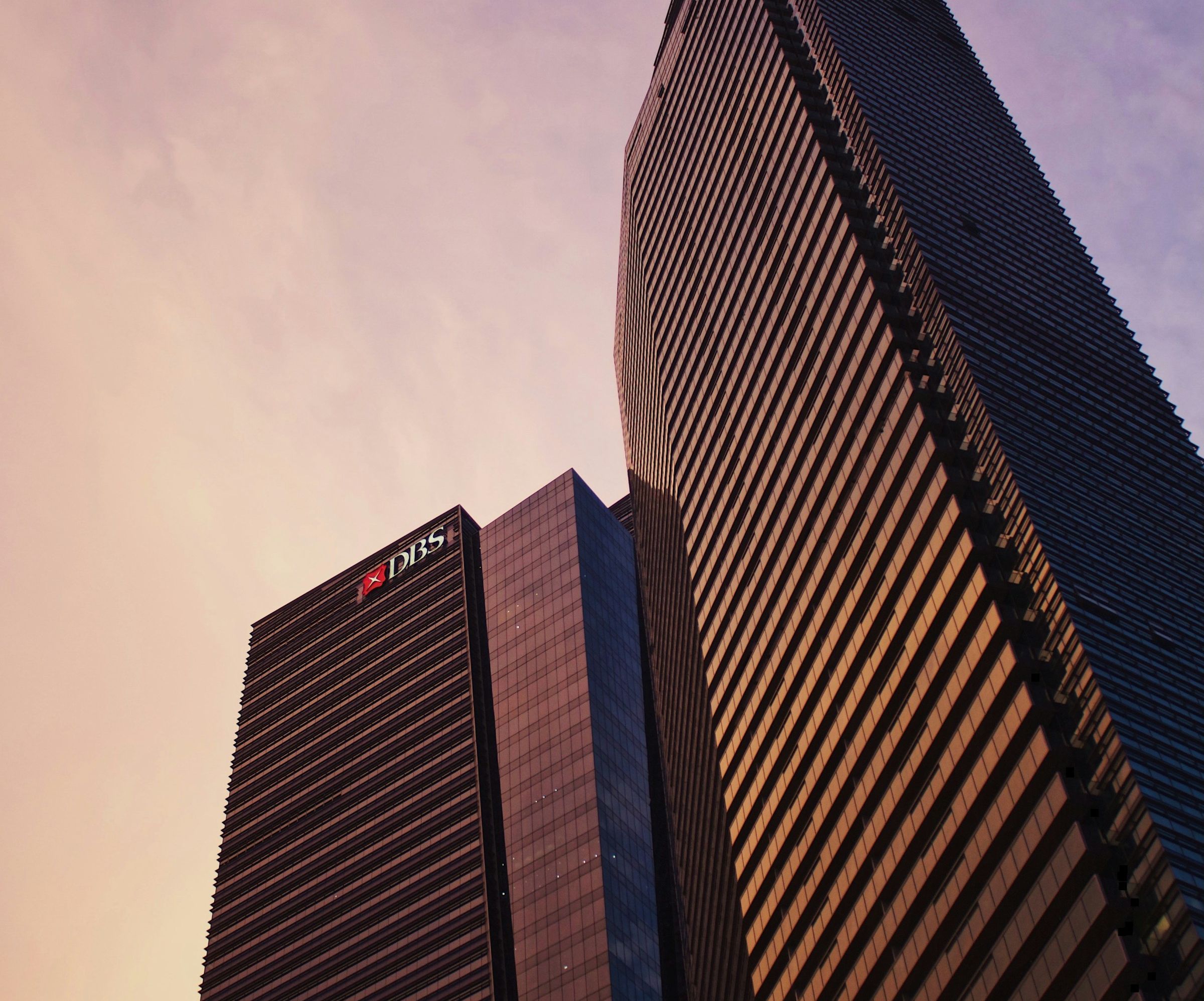While Western banks brace for credit cycle contagion, Singapore’s financial giants are navigating a different pressure point: visibility versus volatility. DBS and UOB—Singapore’s two largest listed banks—reported second-quarter 2025 earnings that revealed less about profit margins and more about strategic posture. DBS held the line, projecting moderate confidence and steady capital return. UOB, meanwhile, pulled back—not just in guidance, but in tone. The divergence isn’t cosmetic. It reflects how institutions are choosing to hedge exposure, pace growth, and communicate clarity in a landscape where geopolitical noise is colliding with capital caution.
The results mark a revealing inflection in Singapore’s financial playbook: when margin compression is no longer hypothetical, and tariff uncertainty is no longer a distant headwind.
DBS, Southeast Asia’s largest lender by assets, posted a 1% rise in Q2 net profit to S$2.82 billion, narrowly beating expectations. The earnings beat, while slim, came alongside an 11% increase in its ordinary dividend and a capital return dividend—signaling that management still sees room to reward shareholders amid shifting rate expectations. But underneath, return on equity softened from 18.2% to 16.7%, and net interest margin edged down to 2.05%. These are not dramatic contractions. But they’re not incidental either. They suggest a bank preparing for margin normalization while using capital return to reinforce confidence.
UOB, by contrast, reported a 6% year-on-year decline in net profit to S$1.34 billion—its first drop since early 2024. More significantly, it reinstated guidance after a pause but revised expectations downward: loan growth in the low single digits (down from earlier high-single-digit hopes), and fee income projections dialed back to high-single digits from double-digit territory. These aren’t just forecasts—they’re recalibrations. And they expose the trade-offs of anchoring near-term planning to macroeconomic visibility that simply doesn’t exist.
What we’re seeing is not just a difference in headline performance, but a contrast in capital confidence. DBS’s capital return approach implies conviction that its balance sheet can absorb rate cycle ambiguity and still deliver structural strength. UOB, more measured, is operating with deliberate conservatism—less about performance, more about pacing. Their respective messages were clear: DBS leans into resilience; UOB leans into caution.
That divergence matters. In a region where U.S. trade policy remains fluid and regional supply chain dynamics remain under reconfiguration, the ability of banks to maintain forward guidance—let alone growth projections—has become a proxy for strategic maturity. DBS’s CEO Tan Su Shan positioned the outlook with tempered optimism, projecting net interest income slightly above 2024 levels but acknowledging net profit may contract. That’s not overconfidence. It’s a signal of balance-sheet-led credibility.
UOB’s CEO Wee Ee Cheong, meanwhile, leaned into the language of long-termism: supporting clients through uncertainty, investing in capabilities, avoiding overreach. That rhetoric reads defensive—but in the current climate, defensiveness may be the more pragmatic form of leadership.
What links both banks is the unspoken weight of external risk—especially the rising unpredictability of U.S. tariff moves. With the United States signaling aggressive import duties on semiconductor-related goods, regional supply chains face second-order effects, from industrial credit downgrades to delayed capital expenditure decisions. Banks are caught in the middle—not because they lend recklessly, but because visibility has compressed across the board.
OCBC, Singapore’s second-largest bank by assets, also posted Q2 earnings last week and echoed the caution, trimming 2025 net interest income expectations. Together, the three banks are outlining a shared truth: 2024’s rate-fueled yield tailwind is over. What comes next requires a different model of growth—one that earns through service, fee innovation, and structural advisory, not just interest spreads.
For many years, Singapore’s banking sector has been lauded for its prudence, low non-performing loan ratios, and ability to ride regional growth while avoiding excess. But in 2025, what’s being tested is not prudence—it’s conviction. Can banks maintain capital allocation discipline while still delivering shareholder value in a world of tariffs, realignment, and rate softening? Can they adjust their internal capital models fast enough to reflect these shifts without losing strategic coherence?
The DBS–UOB divergence offers a partial answer. One bank is betting on forward resilience through visible return. The other is protecting strategic optionality by reducing near-term pressure. Neither is wrong. But in the end, the difference won’t be in earnings per share. It will be in who owns the narrative when volatility becomes the new normal.
As global lenders from HSBC to Standard Chartered also flag geopolitical risks and macro drag, Singapore’s banks are no longer shielded by geographic advantage or past prudence. Strategy heads and transformation leaders within these institutions must now optimize not for yield, but for clarity: in communication, capital allocation, and forward guidance discipline.
This is not just about beating consensus. It’s about owning direction when the market no longer provides one.






